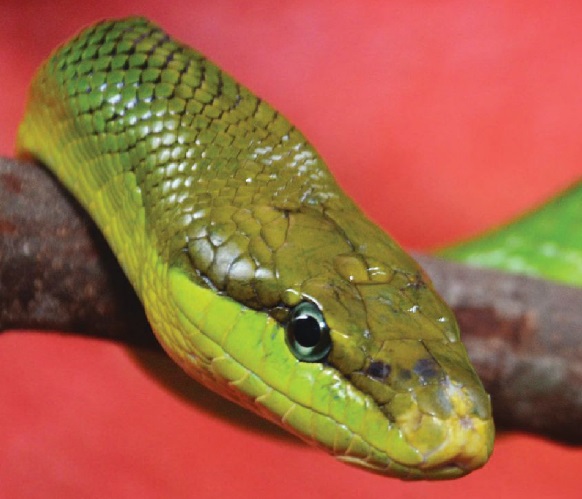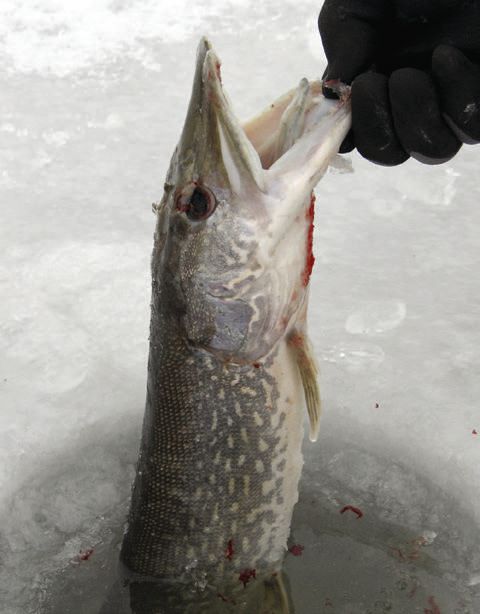What can we learn in tribology from Mother Nature?
TLT Sounding Board April 2015

www.canstockphoto.com
Mother Nature is the ultimate tribologist, according to TLT readers answering this month’s questions. Her solutions are simple, ingenious, eternal and, surprisingly, not always environmentally friendly. STLE members marveled at nature’s ability to solve unique lubrication problems. “It is pretty amazing how long people’s joints can last in a continuously wet, variable pH and solids-containing environment,” one reader noted. Among the naturally occurring lubricants most commonly mentioned by readers are synovial fluids, various plant oils, animal slime, water (in both liquid and frozen states) and tear ducts. Many readers noted that although nature doesn’t overly complicate issues, she does take a systems approach to friction issues. “It isn’t just the chemical (lubricant),” one reader noted, “but also the substrates, type and range of motion, geometry, environment and other factors that influence the final success of the system.”
Mother Nature produces many natural polymers such as polypeptides and polysaccharides that have lubrication properties. Do you have experience in trying such materials in your lubricant formulations or equipment?
Yes
11%
No
89%
Based on responses sent to 13,000 TLT readers.
Surprisingly, her solutions aren’t always environmentally friendly. Her natural boundary additives (sulfur, chlorine and phosphorous) are being banned as bad for certain other pollution effects.
Biodegradation possibly.
Lots, our research cannot hold a candle to what has occurred and is occurring in natural worlds.
Safer, more biodegradable, non-hazardous, possibly edible lubricants.
We can learn a lot from hydrophobic mechanisms observed on leaves. Another interesting field of research is the development of self-healing materials. We can learn a lot from Mother Nature’s mechanisms.
That tribology is a very complex thing. There are few simple formulations or solutions.
Nearly all lubricants in nature are water miscible or soluble in water. Humidity, which is present in most natural environments, always assists lubrication, often achieving coefficient of friction of 0.01. Yet our technical lubricants, which typically assure just COF 0.1, are designed to fight humidity and usually perform worse in humid conditions.
We can learn that nature is full of adaptations to conditions, and if the conditions require lubrication, then lubricating materials will be the result. But they are specific to those conditions.
That vegetable oils have poor thermal stability and make messes of circulating systems.
Fatty acids.
My research on tribology of snake skin and lotus leaf in the past showed that natural tribo-systems use a combination of multiscale surface texture, surface chemistry/lubricant and conformability to control friction and adhesion.
That lubricants must be able to adapt and be effective in and on many different situations and surfaces.
Unique, out of box solutions to problems.
Sometimes the simplest things are more complicated than first thought—and let’s not complicate things unnecessarily.
Any process that requires the synthesis of two materials to form a new one.
Synovial joint fluid is one example of a bio-mimicking lubricant.
Yes, we should be able to. For example, it is pretty amazing how long people’s joints can last in a continuously wet, variable pH and solids-containing environment, as long as they are not unnaturally damaged.
Mother Nature takes a system approach to solve friction problems. It isn’t just the chemical (lubricant) but also the substrates, type and range of motion, geometry, environment and other factors that influence the final success of the system.
Biology is complicated and has evolved over a long period of time.
By looking at the cartilage structure in the knee, we can see how a good load-carrying capacity can be cajoled from a protein/water blend in a very highly conformal joint “bearing” with a semi-porous cartilage structure.
Material/lubricants/biodegradable.
Everything.
Many substances can be developed from natural elements.
Application methods (tear ducts/blinking). Surface texturing for lubrication (lotus leaf). Solid state lubricants (bone cartilage).
How various slimes are used to not only reduce friction but also act as a repellant against bacteria and even oxidation.
We can learn about frictional contact by examining how insects can climb walls or stick to a ceiling.
Probably quite a lot, especially when it comes to water-based systems.
Wear resistance.
How physiology manages the proper lubricating points and long-term lubricating durability so far unattained through tribology with inherently more durable materials.
That naturally occurring lubricants can teach us a lot.
Friction between our foot and the ground that prevents us from falling and slipping. Ice that locally melts to create a lubricant (water) and allow skating or similar activities.
How to attach the lubricant molecule to the substrate, thus lowering the level of lubricant needed to perform the task.
Capillary action on surfaces can be better with Mother Nature-type lubricity agents, and they are much easier to manipulate for synthesis.
That lubricants must be constantly replenished in biological contacts. I’m not aware of any “factory fill for life” bio-lubrication examples.
Many slippery polymers are produced by Mother Nature. Why is their use in modern lubricants rare?
They are not stable in unnatural environments such as working equipment
38%
There is not enough technical data to convince me to try them
33%
I’ve never thought of using them
24%
Other
36%
Based on responses sent to 13,000 TLT readers. Total exceeds 100% because some respondents chose more than one answer.
 www.canstockphoto.com
Please share examples of naturally occurring lubricants that you have observed or know about.
www.canstockphoto.com
Please share examples of naturally occurring lubricants that you have observed or know about.
Water! Hydroplaning under ones tires, if the acceleration is too great.
Animal fat and fish oil.
Peanuts, soybean.
Animal fats, fish oils, tar pits, plant-based oils.
Vegetable lubricants, synovial fluids in humans, mucosal-produced fluids, etc.
Animal fats, castor oil plant, cocoa butter, canola, peanut oil, vegetable fats, linseed oil.
Any slime in animals, such as a northern pike, is a lubricant—it facilitates motion, avoids friction and cleans. Same goes for cartilage.
Eyelids blink with little friction due to some tears in eyes. Muscles slide against each other in movement without much friction.
Hyaluronic acid in joints, mucous.
Vegetable oil as EALs used in boats that cause the same type of slime trail. This is why all oils are a violation when spilled into water.
Fish oil.
Saliva, synovial fluid.
The fluid in articular cartilage serving as a synovial fluid reserve.
Synovial liquid in knees.
Animal saliva.
Crude oil.
Natural esters found predominantly in canola and other plant oils.
Natural triglycerides used in hydraulic fluids and other.
In kinder, more gentle days, my father’s company motto was “a lubricant for every need.”
Graphite.
Various minerals have been shown to provide excellent lubricating properties such as talc and MoS2. Various plant and animal oils and fats also show good lubricating properties.
Humans existed for thousands of years before anyone thought much about friction in nature. That says a lot about Mother Nature’s effectiveness in integrating lubrication into natural systems. Only when people built machines did they realize that friction and wear could be a problem.
Soy lecithin.
Lightening bolts through storms.
Coconut oil.
Agri-oils.
Nano-texturing for hydrophobicity (lotus leaf), cartilage in bone joints. Tear ducts/blinking eyes for optic lubrication.
Anyone who has handled catfish, eels, etc., can testify to the slippery nature of the biofilms that cover their skins.
Coconut oil—it’s life changing.
Synovial fluid, the natural lubricant that allows the joints in our bodies to operate properly.
Knee joint fluid.
Mucin—the glycosylated protein in our throats is a good lubricant.
Bean oils, tallow, tree oils.
Animal tallow.
Mineral oils (from refining crude oil) triglycerides (tallow, coconut, palm, canola, corn, etc.).
Slime on fresh-caught fish. Ice.
Plant extracts are excellent triglyceride for lubricants. They have boundary lubrication that is superior to most EP agents.
Tears prevent eyelids from sticking to eyeballs.
Vegetable oils.
Most surface active additives used in modern lubricants are man made. Are you convinced these offer better performance than naturally occurring substances such as biopolymers?
Yes
34%
No
66%
Based on responses sent to 13,000 TLT readers.
Editor’s Note: Sounding Board is based on an email survey of 13,000 TLT readers. Views expressed are those of the respondents and do not reflect the opinions of the Society of Tribologists and Lubrication Engineers. STLE does not vouch for the technical accuracy of opinions expressed in Sounding Board, nor does inclusion of a comment represent an endorsement of the technology by STLE.